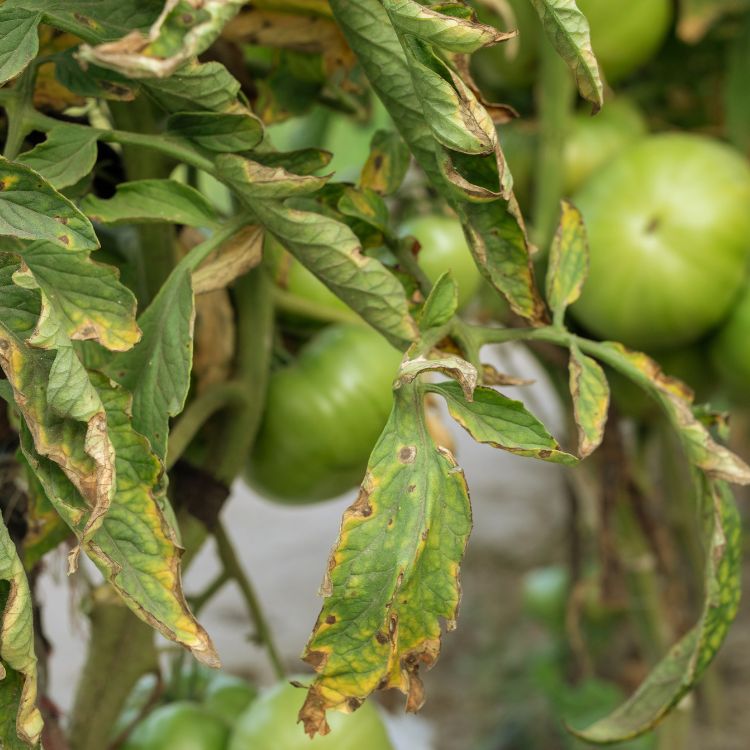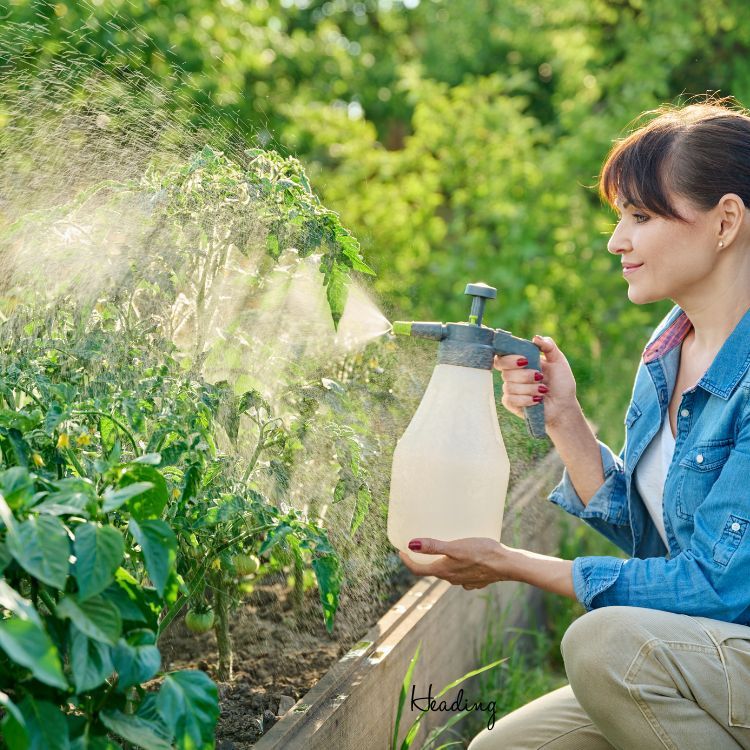
Gardening is an art, and like all artists, gardeners have their secrets. One such secret, which might seem like a bit of chemistry magic, is the use of hydrogen peroxide on tomato plants. But why would you use something typically found in your medicine cabinet on your garden? Well, let’s dive into that.
Key Takeaways
Hydrogen peroxide (H2O2) can prevent and treat fungal diseases in tomato plants.
It’s important to use the correct mix ratios to avoid damaging the plants.
Application should be timed properly, preferably in the evening or on overcast days.
Hydrogen peroxide also helps in oxygenating the soil, benefiting root health.
Always start with a lower concentration and observe plant response before regular use.
Nipping Fungal Foes in the Bud
Tomatoes are susceptible to a variety of fungal diseases, which can devastate a crop and leave a gardener’s hard work in ruins. Fortunately, hydrogen peroxide offers a safe, natural way to combat these pathogens. But it’s not as simple as just splashing it on – there’s a science to it, which we’ll explore.
Understanding Tomato Fungal Diseases
Fungal diseases like blight, leaf spot, and powdery mildew can spell disaster for tomato plants. These diseases thrive in damp conditions and can quickly spread from plant to plant. Once they’ve taken hold, they’re tough to beat. That’s where hydrogen peroxide steps in. It acts fast to kill fungus on contact, stopping diseases in their tracks.
The Role of Hydrogen Peroxide
Hydrogen peroxide is a natural compound that mimics the immune response of plants against pathogens. When applied to tomato plants, it breaks down into water and oxygen, the extra oxygen being lethal to fungi. This not only halts the disease but also provides additional oxygen to the soil, which helps promote healthy root growth.
Mixing it Right
Getting the mixture right is crucial when using hydrogen peroxide for your tomato plants. Too strong of a solution can damage the leaves and roots, while too weak may not be effective against those pesky fungi.
Decoding Concentration Levels
Hydrogen peroxide comes in various concentrations. The one most commonly available is the 3% solution found in drug stores. This is the starting point for most garden applications. However, it’s essential to dilute it further to avoid harming your plants. A general rule of thumb is to mix 1 part of 3% hydrogen peroxide with 10 parts water, giving you a 0.3% solution.
For those who are mathematically inclined, here’s a quick example: If you have 100ml of 3% hydrogen peroxide, you’ll want to add it to 900ml of water. This ratio ensures that the concentration is low enough to be safe for the plants but still effective against fungi.
The Perfect Hydrogen Peroxide Solution
Once you’ve got your dilution down, it’s time to mix up the perfect hydrogen peroxide solution. If you’re dealing with an active fungal infection on your plants, you might want to increase the strength slightly. A 0.5% solution, which would be 1 part 3% hydrogen peroxide to 5 parts water, can be used. But proceed with caution and always test on a small area first.
Remember, it’s better to err on the side of caution. If you’re unsure, stick with the lower concentration. You can always apply it more frequently rather than risk damaging your tomato plants with a too-strong solution.
Application Tips

Application is just as important as the mix. You want to ensure that the hydrogen peroxide solution reaches the problem areas without causing undue stress to the plant.
When and How to Spray Your Tomatoes
The best time to spray your tomato plants is in the evening or early morning. This avoids the strong sunlight which can interact with the hydrogen peroxide, leading to leaf burn. Ensure you cover both the tops and undersides of the leaves, as fungi can lurk in nooks and crannies. If it’s your first time using the solution, do a patch test on a few leaves first and wait 24 hours to check for any adverse reactions.
When spraying, use a fine mist to avoid drenching the plants, which can lead to other issues such as root rot. It’s also wise to avoid spraying blossoms to prevent any potential damage to the fruiting parts of your plants.
Keep an eye on the weather forecast too. If rain is imminent, hold off on the application. Rain can wash away the hydrogen peroxide, rendering your efforts ineffective.
Evening or early morning application to avoid sunburn.
Cover both tops and undersides of leaves.
Use a fine mist – don’t drench.
Avoid spraying blossoms.
Monitor weather and postpone if rain is expected.
Consistency is key. Regular applications every week or two can prevent the onset of fungal diseases, keeping your plants healthy and productive.
Maintaining a Healthy Tomato Haven
Beyond the immediate treatment of diseases, maintaining a healthy environment for your tomatoes will reduce the need for interventions. This means proper spacing for air circulation, watering at the base to keep leaves dry, and using mulch to prevent soil-borne diseases from splashing up onto the plants.
The Goodness Beyond the Fungi-Fight
Hydrogen peroxide isn’t just good for fighting off fungi; it has other benefits for your tomato plants as well.
A Breath of Fresh Air for Roots
When applied to the soil, hydrogen peroxide breaks down and releases oxygen. This extra oxygen can invigorate your plants’ roots, leading to stronger, more vigorous growth. It’s like giving your plants a breath of fresh air right where they need it most.
Here’s how to apply it to the soil:
Mix 1 part of 3% hydrogen peroxide with 32 parts water. This will give you roughly a 0.1% solution, which is gentle enough for the soil. Water the base of your plants with this solution to deliver oxygen directly to the roots.
Remember, a little goes a long way. You don’t need to do this with every watering – once every month or so will suffice. It’s all about maintaining that balance.
Boosting Plant Vigor
Hydrogen peroxide does more than just protect your tomato plants from fungal diseases. It’s also a booster for overall plant vigor. The additional oxygen from the breakdown of hydrogen peroxide encourages more robust root development, leading to healthier, more resilient plants. Stronger roots mean better nutrient uptake and improved growth, so your tomatoes can reach their full, juicy potential.
FAQs
Now that we’ve covered the essentials of using hydrogen peroxide on tomato plants, let’s address some frequently asked questions to help you use this method confidently.
How often should I apply hydrogen peroxide to my tomato plants?
For preventive measures, applying a diluted hydrogen peroxide solution every 1-2 weeks can be beneficial. If you’re actively treating a fungal infection, you may need to apply it more frequently, such as every 5-7 days, until the issue subsides. Always observe your plants after application to determine how they respond and adjust the frequency accordingly.
Can hydrogen peroxide damage tomato plants?
Yes, if used incorrectly. Concentrations higher than recommended can cause leaf burn and root damage. It’s crucial to start with a lower concentration and to test it on a small area of the plant first. If there’s no adverse reaction after 24 hours, you can proceed with treating the entire plant.
Is hydrogen peroxide safe for all types of tomato plants?
Hydrogen peroxide can be used on all types of tomato plants, but it’s always best to test it on a few leaves first. Different varieties may have different sensitivities, and environmental factors can also influence how a plant reacts to treatments.
What is the shelf life of a hydrogen peroxide solution for tomato plants?
A freshly mixed hydrogen peroxide solution should be used within a few hours for maximum effectiveness. Hydrogen peroxide begins to break down when exposed to light and heat, so it’s not advisable to store the solution for extended periods.
Can I use hydrogen peroxide for seed starting or only for established plants?
Hydrogen peroxide can be used for seed starting to prevent fungal infections and promote strong seedling growth. A very mild solution can help to oxygenate the water and reduce the risk of ‘damping off,’ a common issue that causes seedlings to rot at the base. Just be sure to use a weaker solution than you would for established plants to avoid harming the delicate seedlings.
By now, you’re equipped with the knowledge to use hydrogen peroxide as a natural ally in your garden. Not only does it help manage fungal diseases, but it also promotes healthier, more vigorous tomato plants. Remember, gardening is a practice of patience and learning. Each plant is unique, and as you become attuned to your garden’s needs, you’ll find the right balance to keep your tomatoes thriving.







Leave a Reply